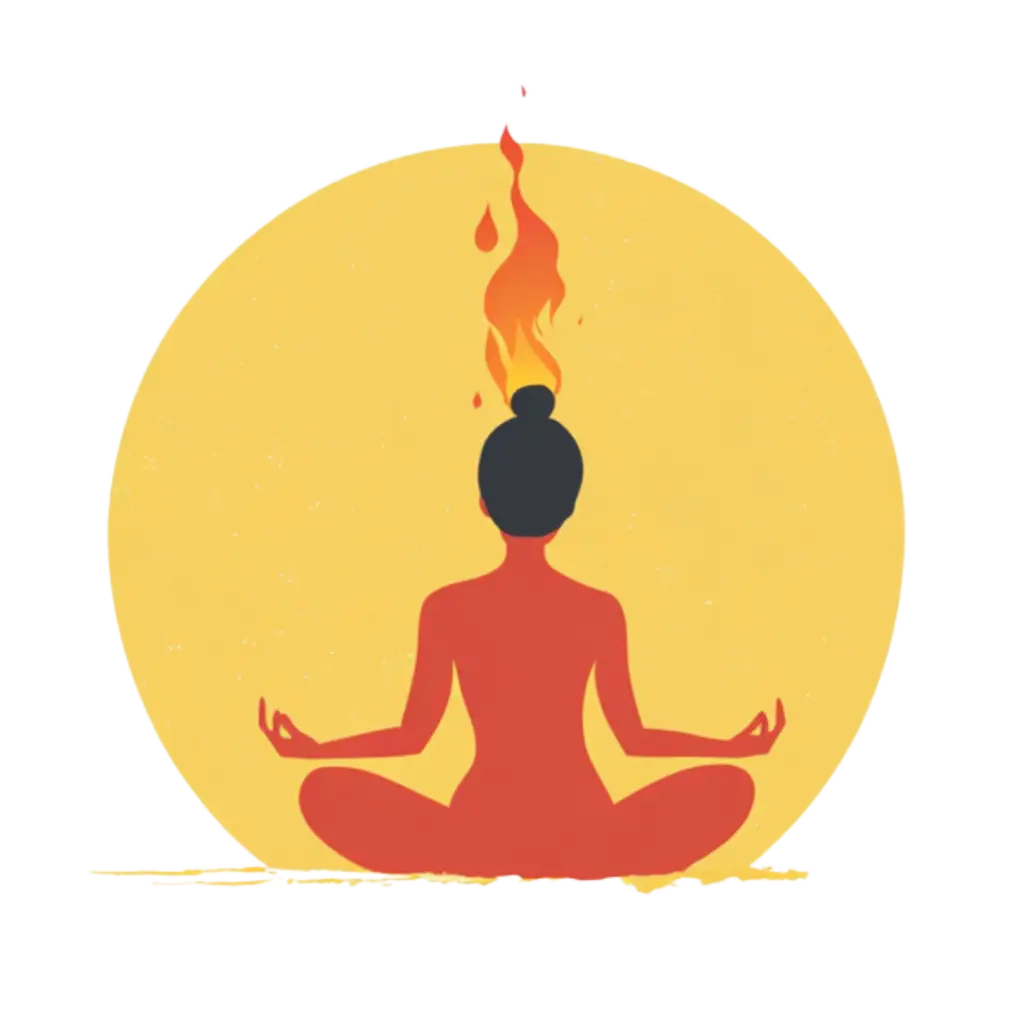Share this article:

“Breath of Fire is not just a breath; it [creates] a state of being that connects you with your infinite potential.” — Unknown
Breath of Fire is a rapid, rhythmic, and continuous breath that lasts approximately 2-3 cycles per second. The inhale and the exhale are of equal length, with no pause between them. It is practiced through the nostrils with a closed mouth, unless described otherwise in the kriya instructions.
Breath of Fire is powered by the diaphragm muscles and vigorously moves the Navel Point and solar plexus. To exhale, the air is expelled powerfully through the nose, by contracting the diaphragm rapidly. To start, you can do this by pulling the navel point and solar plexus in and back toward the spine. When this pull is relaxed, the air enters the lungs naturally, and you can then work toward a rapid yet comfortable rhythm.
When Breath of Fire is done correctly, there is no rigidity in the hands, feet, face, or abdomen, and the chest stays relaxed and slightly lifted throughout the entire breathing cycle.
Some people find it easy to do Breath of Fire for a full 10 minutes right away. Others find that the breath creates an initial dizziness or giddiness. If this happens to you, take a break. It’s important to build up slowly so that you can assess how you feel.
Some tingling, dizziness, and lightheadedness are completely normal as your body adjusts to the new breath and new stimulation of the nerves. Concentrating at the Third Eye Point (Ajna Chakra) may help relieve these sensations. Sometimes these symptoms are the result of toxins and other chemicals released by the breath technique.
Even though Breath of Fire has amazing benefits, it is not recommended if you have any of the following conditions:
If you do have any of these conditions, ask your physician if it is healthy for you to practice this pranayama. If you cannot practice Breath of Fire, you can substitute Long Deep Breathing for it in any kriya or meditation.
There are three common problems to watch for when you begin practicing Breath of Fire:

This 20-28 minute dynamic practice uses powerful breathing techniques to awaken your inner fire and elevate your energy.
This powerful kriya “Breath of Fire with Lion’s Paws” is a one-exercise practice designed to energize your mind and body.


This invigorating kriya focuses on strengthening your lungs and enhancing circulation throughout your body.

Amrit Kaur Ramos is the founder of Areté and a Kundalini Yoga instructor with over 20 years of experience guiding students through the transformative practice of Kundalini Yoga. She is also a dedicated women’s circle leader, with over 10 years of experience creating sacred spaces for women to connect, heal, and empower each other. Amrit Kaur brings a wealth of wisdom and compassion to her teaching, inspiring others to awaken their true potential and live authentically.
Follow us on social media for daily inspiration, free resources, and community updates. Find us on Instagram, Facebook, YouTube, and LinkedIn.
Copyright 2024 © Areté. All Rights Reserved.

Fill out the form below, and we will be in touch shortly.